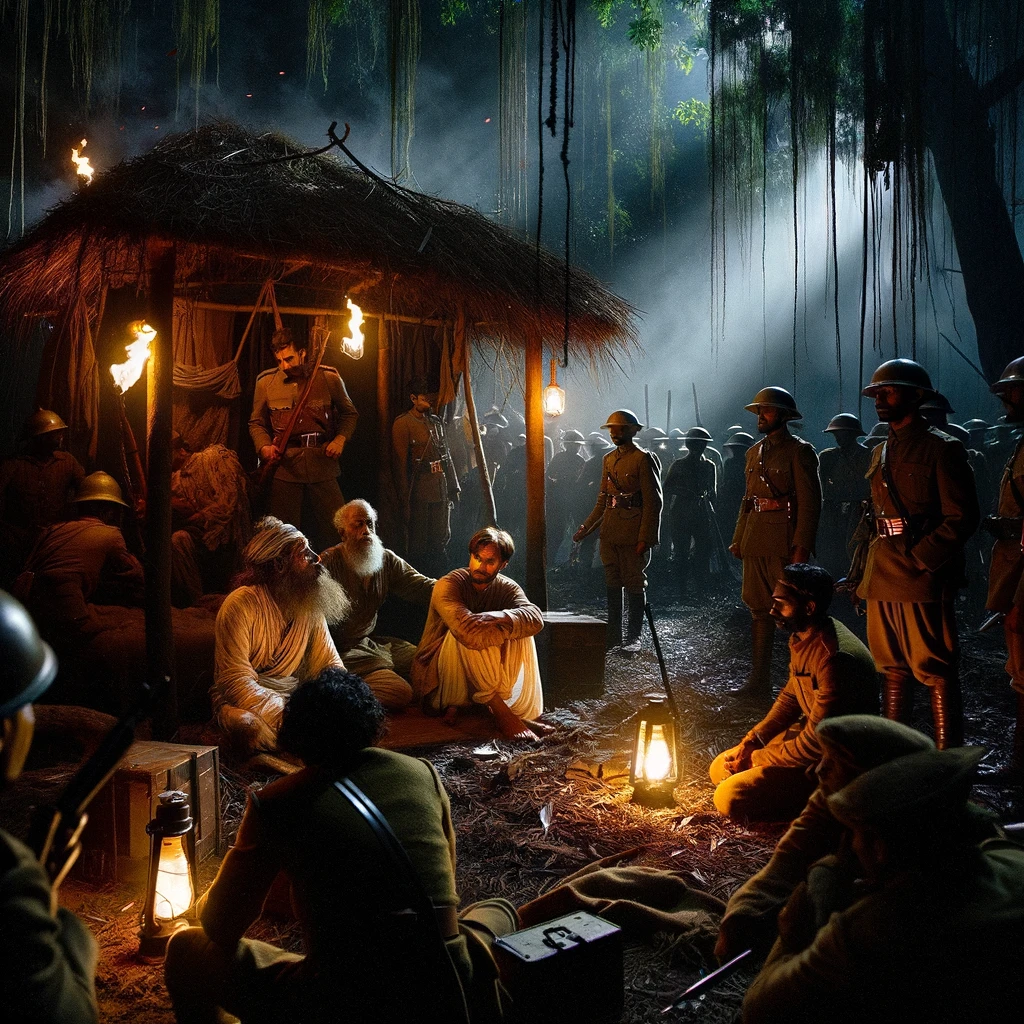1857 Uprising India as Part of Freedom’s Fight
The Indian freedom struggle, a monumental journey towards independence, showcases a rich tapestry of resilience and sacrifice. Among the annals of this struggle, specific acts of resistance and sacrifices on February 16th across various years stand as testaments to the indomitable spirit of India’s sons and daughters. This essay delves into these acts, particularly focusing on the pivotal “1857 Uprising India,” a watershed moment that preluded the country’s march towards freedom.
The 1857 Uprising: A Prelude to Independence
The Catalyst of Revolt
The “1857 Uprising India” marked the first major revolt against the British East India Company’s rule, embodying the collective discontent brewing against foreign domination. This uprising was not just a military rebellion but a symbol of unified resistance across different strata of Indian society.
Heroes of February 16, 1858 as part of The 1857 Uprising
On February 16, 1858, the saga of valor and sacrifice added another chapter with the ultimate sacrifices of Agah Jan, Ahdoollah, Gonshoo, Issory, Ram Bux, and Surbin Khan. These freedom fighters, hailing from diverse backgrounds, converged on the battlefield with a common goal: to challenge the might of the British company rule. Their acts of defiance on this day, though culminating in the supreme sacrifice, ignited a flame of resistance that would burn till India achieved independence.
- Agah Jan of Nizamabad, Delhi, epitomized the Mughal resistance, facing execution for his participation in the Delhi defense.
- Ahdoollah, from Syedganj, Delhi, a Pathan warrior, was captured and hanged for his active role in the uprising.
- Gonshoo of Najafgarh, Sheikh by origin, paid the ultimate price for his rebellion against the British company .
- Issory, a Chauhan resident of Shahdara, Delhi, exemplified the spirit of defiance until his last breath.
- Ram Bux, a Jat from Alipur, Delhi, and Surbin Khan, from Chandni Chowk, Delhi, both faced the gallows for their active participation in combat against the British company forces.
These narratives of courage and sacrifice underscore the “1857 Uprising India” as not merely a revolt but a beacon of hope and a call to arms for future generations to fight for their rightful independence.
The Bhumkal Rebellion: Tribal Assertion of Rights
The Bhumkal Rebellion of 1910 stands as a testament to tribal defiance against colonial and feudal domination in Bastar. It was not just an uprising but a declaration of the tribal community’s resolve to fight for their rights and preserve their way of life. Warriors such as Ansu, Balcha/Barchha, Bhadru, Bhaira, Budhru, Chandu/Chandru, Dalam, Daniya, Doda Peda, Harma Muria, Jogi, Kindariya/Kondariya, Kola Majhi, Korlk, Lal Kalindra Singh, Mangtu, Mesa, Muliya, Muliya/Muchiya, Mundi Kalar, Musmi Harna, Narsimha/Narsingh, Roopdhar, Sora/Kosa, and Tihru played crucial roles in this rebellion. Their collective resistance on February 16, 1910, highlighted the depth of their struggle for autonomy and rights. Despite facing dire consequences, their legacy of courage and unity continues to inspire the ongoing fight against oppression.
Shifting Allegiances: The INA and the Fight for Freedom
The significance of February 16, 1942, resonates deeply in the context of the Second World War and the Indian National Army’s (INA) formation. On this day, Jai Lal, Raje Ram, and Ram Lal, among others, made a decisive shift in loyalty from the British Company -Indian Army to the INA, led by Subhas Chandra Bose. Their transition symbolized a broader movement of Indian soldiers rallying for the country’s independence, challenging British company rule on multiple fronts. Their contributions to the INA’s efforts not only highlighted their bravery but also underscored the growing Indian resistance against colonial forces during a critical period in history.
Surjya Kumar Sen: A Revolutionary Leader
Surjya Kumar Sen’s legacy is monumental in the annals of the Indian freedom struggle. His leadership during the Chittagong armoury raid underlines a pivotal chapter in the 1857 Uprising in India. On February 16, 1933, Sen’s capture marked a critical moment, signifying the profound impact of his revolutionary activities. His unwavering dedication to India’s independence inspired countless individuals, making his story a cornerstone of the freedom movement.
Conclusion
Reflecting on the courage and sacrifices of freedom fighters like Surjya Kumar Sen, the diverse nature of the Indian freedom struggle becomes evident. Each act of resistance, especially those on February 16th across different years, contributes to a rich legacy of defiance against colonial rule. The 1857 Uprising in India and subsequent movements underscore the collective aspiration for independence, celebrating the enduring spirit and legacy of those who dared to dream of a free India.
Feature Image: Clikc here to view the image.
References:
Volume -1 Part -I [Delhi, Haryana, Punjab and Himachal Pradesh 1857-1919] ![]() (1.06 MB)
(1.06 MB)
Volume -1 Part – II [Delhi, Haryana, Punjab and Himachal Pradesh 1920-1947] ![]() (1.22 MB)
(1.22 MB)
Volume -2 Part – I [UP, Uttarakhand, MP, Chhattisgarh, Rajasthan and J&K 1857-1947] ![]() (1.35 MB)
(1.35 MB)
Volume -2 Part – II [UP, Uttarakhand, MP, Chhattisgarh, Rajasthan and J&K 1857-1947] ![]() (1.34 MB)
(1.34 MB)
Volume -3 [Maharashtra, Gujarat and Sind 1857-1947] ![]() (1.14 MB)
(1.14 MB)

of course like your website but you need to check the spelling on quite a few of your posts. Many of them are rife with spelling issues and I find it very bothersome to tell the truth nevertheless I will surely come back again.
Some really nice and useful info on this site, as well I conceive the layout has got fantastic features.